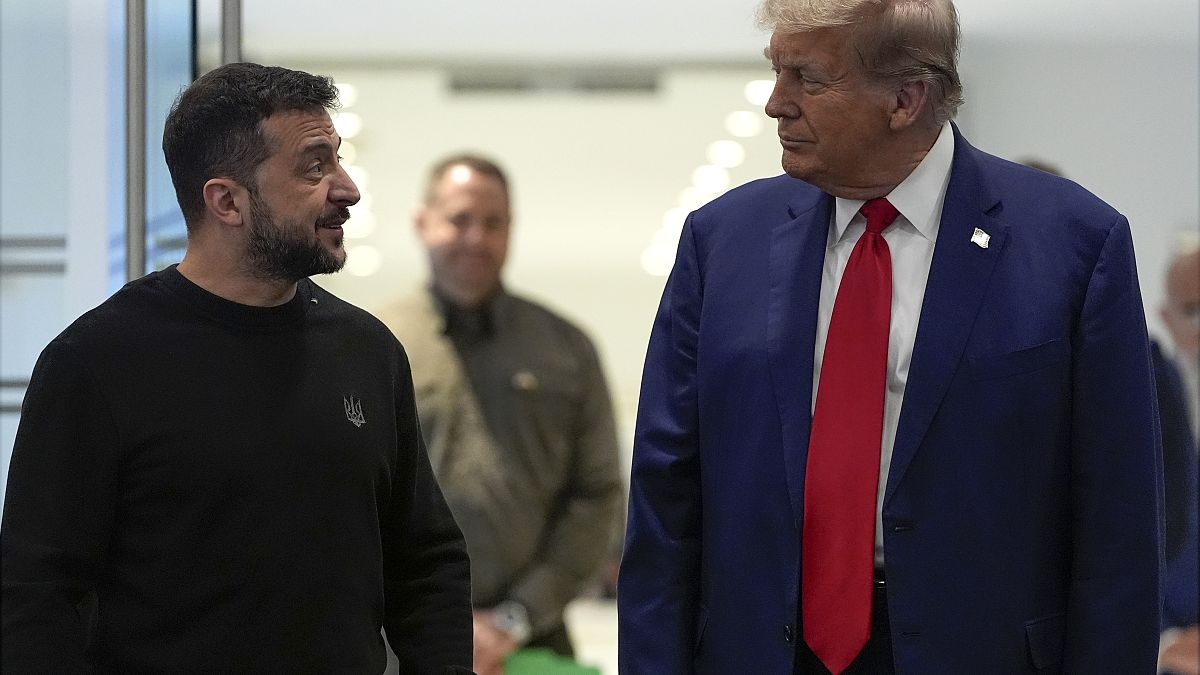As Donald Trump returns to the White House, questions are being asked about arguably his most ambitious campaign promise: to end the war in Ukraine in 24 hours. Since then, it seems like Trump might have given it another thought and a new timeline. Could it be good news for Ukraine?
During his 2024 presidential campaign, Donald Trump repeatedly said that he could put an end to Russia’s war against Ukraine in 24 hours.
“I will have the deal done in one day,” Trump said.
This claim sounded unrealistic even for Trump, who is known for his electoral narrative. As the biggest war in Europe since World War II was raging across Ukraine, this specific promise was not forgotten as one of the many presidential campaign statements and has become a pivotal issue for Trump ever since.
In his speech declaring victory in the US presidential election on 6 November, Trump made no mention of Ukraine yet alluded to just how consequential his second term in office will likely be for the country ravaged by Russia’s invasion.
Ukrainian President Volodymyr Zelenskyy congratulated him in a post on X, in which he recalled their face-to-face talks in New York City in September. “I appreciate President Trump’s commitment to the ‘peace through strength’ approach in global affairs. This is exactly the principle that can practically bring just peace in Ukraine closer,” Zelenskyy wrote.
However, as the moment of Trump’s return to the White House keeps getting closer, the 47th president of the United States of America might have given it another thought and another timeline. What started as “24 hours”’ has now turned into half a year.
In a rather harsh reality check, Trump said a six-month timeline for ending the war was more realistic. Ukraine’s former Economy Minister Tymofiy Mylovanov told Euronews that this timeline revision is a good sign for Kyiv.
“The worst possible scenario would be the surrender of Ukraine. And that’s the 24-hour scenario where basically the US has leverage over Ukraine and the EU in terms of support and doesn’t have much leverage at the moment over Russia, which means accepting the Russian demands and putting pressure on Ukraine to accept Russian demands,” Mylovanov said.
“That’s why the 24-hour scenario is the worst scenario possible for Ukraine. So the sign that they are talking now about six months or three months suggests that they will be building leverage over Russia. And that’s why they need time.”
‘Much better than it could have been’
According to Mylovanov, there are signs that this leverage is being built now, possibly even in coordination between the administrations amid outgoing US President Joe Biden’s “last-ditch” attempt to confiscate $300 billion (€291.2bn) in Russian assets.
The money belongs to the Russian Central Bank and was initially frozen three years ago after Moscow launched its full-scale invasion of Ukraine. Most of that money has still been held in European banks, though a fraction remains in US-based ones.
“The news is not in the attempt to confiscate, but in the fact that it is last ditch suddenly, which is coordinated — if you look at the news — with the Trump administration. Basically, it’s signaling to Russia that we are going to try to find leverage over you. And if you want your money back, we’re willing to haggle over it,” Mylovanov said.
These signs point to the idea that the Trump administration is evolving towards a scenario that is “not so favourable for Russia,” which is “good news for Ukraine,” he explained.
Mylovanov admits there are still many people in Ukraine who are worried about what Trump’s presidency might mean for the country defending itself from Russia’s full-scale invasion for almost three years now.
“They say Trump is trying to sell us out,” Mylovanov pointed out, arguing that what he sees is Ukraine being “in a pretty good space”. “Maybe not as good as possible, but much better than this could have been,” he added.
Even if the Trump administration is leaning towards what he calls a “not so favourable scenario” for Russia, it still doesn’t mean it is favourable for Ukraine.
During the presidential debate, Trump refused to say whether he wanted Ukraine to win the war against Russia, avoiding the direct question on this matter. He simply said: “I want the war to stop.”
Is this good enough for Kyiv?
It is all about the realistic expectations of what Ukrainians are and are not willing to accept, Mylovanov said.
“What people are not willing to accept is a change of constitution, disarming of Ukraine or ceding unoccupied territories. What are people willing to accept – based on the surveys – is some kind of temporary acceptance that we do not control the territory,” he explained. “So some kind of de facto reality. So people are willing to accept reality but are not willing to surrender.”
According to Mylovanov, the complicated aspect is finding what Ukraine and Russia could possibly agree upon.
“Putin has to sell it domestically as a victory. Ukraine has to sell it domestically as a guarantee against future invasions. Everything which creates a Trojan horse for Russia to come back and take more territory is not acceptable,” he explained.
Given the previous guarantees promised and then broken by Russia, the new pledge would require much more than anything signed on paper, Mylovanov concluded.
Read the full article here


